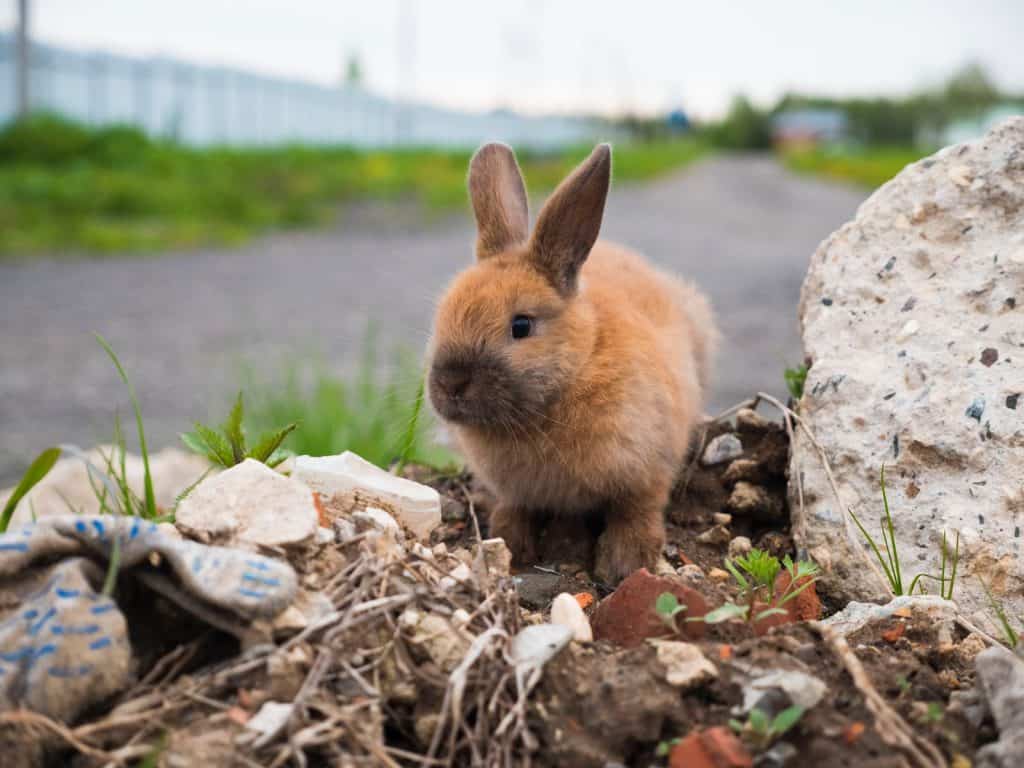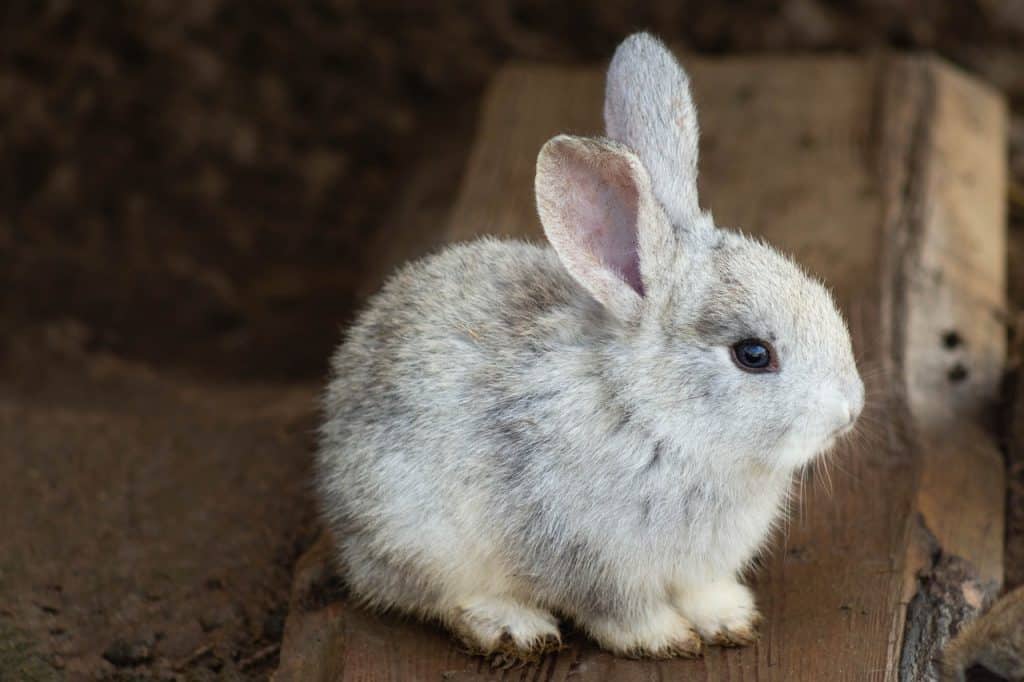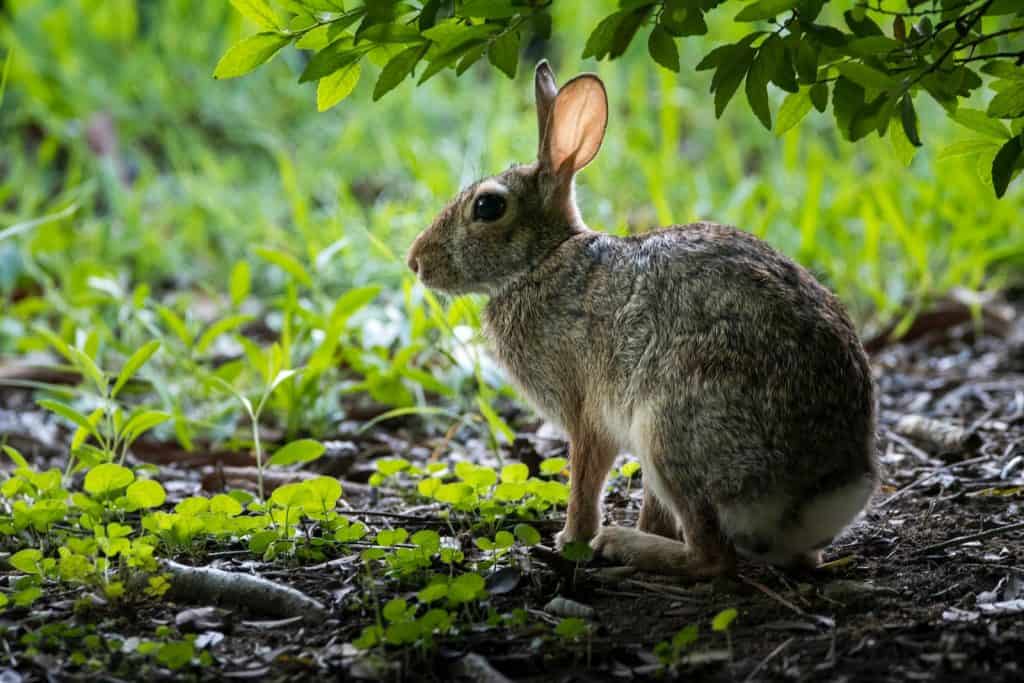
Even if your home is in a bigger city, wild rabbits are likely to be part of your daily life. The fully grown rabbits are capable of taking care of themselves. However, it’s worth wondering what to do if you come across a baby or adolescent wild rabbit.
Cottontail rabbits are a wild breed that is different from domestic ones. They reproduce quickly and reach almost full maturity within six weeks.
You may find litter left alone by mothers of cottontails, who can often place their nests in unusual places. To determine how old the wild rabbits are, and what you can do to help them, you will need a clear guide.
This guide will help you determine the age of wild rabbits and how to tell if they have been abandoned by their mothers. We’ll then cover basic care tips and resources to ensure that the rabbits stay safe.
Let’s get started!
It is less than 3 days old
The newborn Cottontails are less than 2 inches in length and have a dark, almost transparent body. They will be dependent on their mother’s milk for survival and will keep their eyes shut. You should not handle small rabbits unless your mother has left them. (More on that later).
3-9 days old
Wild rabbits will notice a change in their fur color after three days. The fur will be slightly longer than normal and will stand out slightly from the body. Their eyes will still be closed but their ears will begin to open slightly. They are between 2 and 3 inches in length, but they still rely on their mother for survival.
The baby rabbit will be able to hear after 7 days. Although their fur is still tightly pressed against their bodies, their coats are becoming thick enough to help them keep warm.
10-14 days old
After about a week and a half, the baby cottontail’s eyes will open and its ears will become fully functional. They can now wander around their nest without their mothers. Their fur will grow quickly to more than 3 inches in length. As their true coat develops, it will be more natural and “agouti”. They will still need to drink milk for two weeks, but they will start eating hay and dried grasses around their nest.
2-3 Weeks Old
The wild rabbit will grow faster and their fur will become fluffier. They will grow to be approximately 4 inches in length and develop more supportive musculature, which allows them to move around looking for hay, grass, or edible weeds. They will start to leave the nest in brief bursts but return to their nest at night.
3-5 Weeks Old
Wild rabbits, which are most noticeable from the time they reach this age, will continue to grow and develop a thick, warm, insulating coat. They are now more alert and able to spot predators. This means that they can be released into the wild at this age.
They will look very similar to an adult rabbit once they reach 5 to 7 inches in length. Although they are often less than one pound in weight, their instincts will start to protect them from the wild because they only eat what they can find.
6+ Weeks Old
Wild rabbits can be considered fully grown after only one and a quarter months. They may need to grow up to 12 to 20 inches in length, which can take 4 to 6 weeks. They are sexually mature at 8 weeks old and can often reproduce.

How to tell if wild rabbits have been abandoned
Wild rabbits require the care of their mother or a professional from their birth to their adolescence. How can you tell if their mother is still caring for them if you find a nest of wild bunnies?
You can make a mistake judging if a litter of bunnies has been abandoned because rabbit mothers spend a lot of their day out foraging for food. You should never take baby bunnies out of their nests without making sure they aren’t abandoned.
You can check for the mother’s presence at night by placing two pieces of string over the nest entrance. Check back within 24 hours. If the string is moved at all, mama has returned home to feed and check on her children. If this happens, let them be fed and grown.

What should I do if the babies are abandoned?
If this is the case and the mother rabbit has not returned to her nest within 24 hours, you should immediately intervene. Your local veterinarian’s office will be able either to assist you or to refer you to a rehabilitation specialist.
Do not feed babies in any way! It can prove fatal or dangerous to feed them, as they require a specific set of nutrients from their mother’s milk. While you wait for a professional to give you further instructions, do your best to keep them comfortable with soft bedding and dried green grasses.
Conclusion
Wild rabbits are prolific in reproduction and growth, so it is very possible that you will one day come across a nest of young. This guide will help you determine if these tiny creatures need your assistance.
Wild Rescue Texas, which helped me to research this article, is a big thank you.
How does one determine the age of a rabbit?
It’s hard to tell how old a rabbit is until they’ve reached full adult weight. There are no obvious markers on their teeth (like with horses) or bodies that can provide you with this information.
Is it possible to keep a wild rabbit as a pet?
Keeping a wild newborn bunny as a pet is really unlawful in the majority of US states. Most states require a license from your state’s Department of Environmental Protection before you may legally tame a wild rabbit. Unless you find a seriously damaged or sick wild baby rabbit, the animal must be left alone.
Is it safe to approach wild rabbits?
If you, your children, or your pets witness a wild rabbit, whether living or dead, keep away from it. You may have illness signs one to 21 days after handling a wild rabbit. Tularemia is extremely infectious and more frequent in humans than in pets.
Do wild rabbits consume carrots?
Carrots are edible to wild rabbits. Rabbits frequently consume carrots and carrot tips that sprout out of the ground, especially when dark greens are scarce. If the rabbit has access to dark greens, he or she will probably choose the leaves for the carrot.
Do wild rabbits transmit diseases?
Rabbits kept outside, caught from wild populations, or purchased from a pet store may be carriers of zoonotic illnesses. Pasteurellosis, ringworm, mycobacteriosis, cryptosporidiosis, and external parasites are all zoonotic illnesses connected with rabbits.
How old are wild rabbits?
Wild rabbits have greyish-brown hair with a white flash on the underside of their tails. Adult rabbits weigh between 1.2 and 2 kilos. They may reach a length of 30-40 cm, making them smaller than most domestic rabbits. They may live for up to 9 years, although in the wild, they may only live for a year.
Do wild rabbits remember their owners?
Rabbits remember the individuals they spend a lot of time with, including their owners and caregivers. They have a great long-term memory for places and routines since they evolved as prey animals. You may use these associations to help your bunny remember you.
When do wild rabbits have their babies?
They have four to five litters every breeding season, from mid-February to September. Rabbits may have up to 12 babies in each litter.
What does a free-roaming rabbit do all day?
Rabbits are crepuscular, which means they are most active between night and morning, from 5-7 am to 6-8 pm. Rabbits may sleep in their burrows during the day, search for food, or flee from predators if they are disturbed. Because rabbits do not hibernate, they can remain active throughout the day all year.
How does a four-week-old wild rabbit look?
Aged four to five weeks: Cottontails at this age should resemble a little replica of an adult. Like an adult rabbit, the fur stands off the body, the ears stand straight up from the head, the eyes are brilliant, and they should seem alert and suspicious of humans.